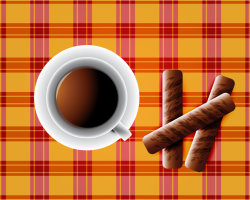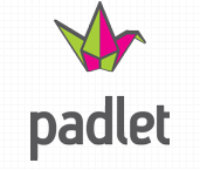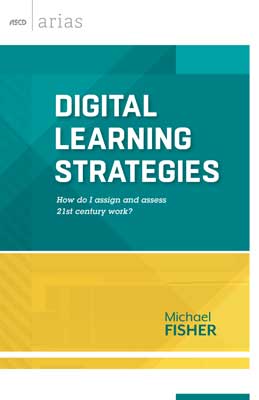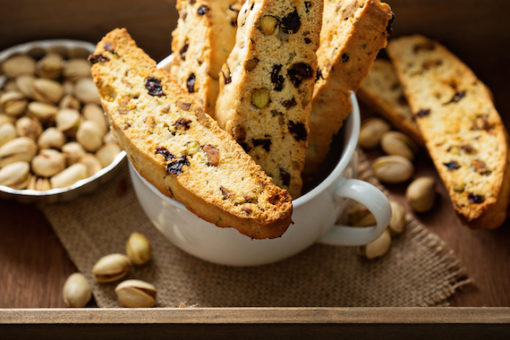Updating Our Recipes for Learning – and Biscotti
Back in the early 90’s, my grandmother taught me how to bake biscotti in a traditional way. She was a baker by trade and taught me about the precision of measuring ingredients to get a perfect dough consistency, how to lay out the initial loaf, cut on the diagonal and re-bake until the cookies reached their optimum crunch.
Over the years, I’ve experimented with the basic recipe, adding additional ingredients, replacing others, trying different thicknesses of the cookie, dipping the cookies in chocolate, etc. My ultimate goal is to get to the cookie, even though my path to get there changes every year.
Around this time of year, I start thinking about the biscotti (and Grandma!), and what I will modify, replace, upgrade, or delete for this year’s batch. Sometimes that decision is based on new ingredients, sometimes on the audience for whom I’m baking the cookies, or the event(s) where the cookies will be shared. There is always a modification to the previous year’s process though the goal is always to get to the cookie.

The things we need to do with students, the tasks that we challenge them with, are the important factors here. It doesn’t matter that you don’t know Wordle or Socrative or Wikis or Storybird. It doesn’t matter that Padlet or Today’s Meet or Notepad is part of your everyday practice. It matters that you understand and design instruction around the outcome. The path to that outcome is what we will replace, not necessarily the outcome itself.
Digital Learning Perspectives
In workshops with teachers, I often try to paint a mental picture of the modern student. I talk about the differences between the world this kid lives in outside of school and the one he or she inhabits in school. There should not be such a wide chasm in decades between the two. I realize that there is at least one, maybe two generations separating students from their teachers, but everyone in the classroom is in the present time. Right?
I discuss how students are used to working and interacting digitally. Sometimes school is a potential impediment to learning when traditional instructional methods are primarily favored. These modern students don’t separate technology from other activities — they don’t think about it because it’s always been there for them, always been available. Except, many times, in school.
These students can find all kinds of information but don’t necessarily know what information is important, why or how they should prioritize it, or how to make connections or creations from it. They are not discerners; they are gatherers. These modern students are not interested, necessarily, in current school constructs for separating Reading, ‘Riting, and ‘Rithmetic. They are looking for integrated and authentic opportunities.
I do realize that in the wake of new standards, new devices, and new ways to interact, teachers are becoming increasingly overwhelmed. So much newness is bogging them down and actually decreasing the professional actions they might ultimately take to improve their practice and work within a modern educational mindset.
That modern mindset is really about willingness, not digital knowledge. It’s about trying new things and exploring new tools and avenues for instruction. It’s about exploring WITH the students rather than FOR the students. The end result is still a cookie, but over time, that cookie gets better and better.
Let’s Take a Bite

In a 7th grade ELA classroom, a teacher I work with in Lockport, New York wanted her students to consider how Stanley Yelnats and the other characters in Louis Sachar’s Holes deal with justice as a thematic element in the book.
She talked with them about fairness and her ultimate goal: to get them to be able to use textual evidence to write about justice as it relates to the arc of the multiple storylines in the novel. She was really excited about using a collaborative note-taking tool, Padlet, in her classroom, and we had a discussion about HOW she might go about using it.
Initially, she wanted to spend a couple of days teaching the students how to use Padlet and hold the students accountable for the depth of information they shared. She was very concerned that students might share non-instructive comments like, “That was cool,” or “OMG. LOL.” She wanted to use a rubric I had shared with her called Notice, Think, and Wonder (which I recently blogged about HERE) to enable students to think critically about the comments they were making.
I asked her what this activity had looked like in the past. She said that students, individually, would locate moments in the book where they saw incidents of justice in any form: Stanley’s day in court, Kissin’ Kate’s reputation and actions, the Warden’s losses at the end of the novel, and (spoiler alert!) the fact that Stanley is cleared of his crimes in the end.

She decided that short mini-lessons on using Padlet and the rubric for Notice, Think, and Wonder, were better than spending days on either of those things. Students could still collaborate using the online tools, and she would shift her expectations for their writing to include the collective thinking of all of the students and what they assembled on the Padlet Wall as a component of their end product.
In sum, she re-focused on the end-result but replaced some of the instructional sequence with a digital tool that moved what was once an individual exploration or small group discussion to a “group think” model where everyone participates in the collection of textual evidence.
This, in turn, gives the students opportunities to understand what their peers believe to be important and offers them the chance to collaborate and communicate around deeper text analysis and negotiate deeper interactions than what she’s done before. She amped up the level of engagement while still holding students accountable for evidence of why they were thinking what they were thinking.
The tool, Padlet, was a new vehicle for better connections and interactions and thinking, but her lesson wasn’t a “Padlet Lesson.” It was still focused on justice as a theme in the novel. The students, in general, provided a more in-depth analysis because they were allowed to see their peers’ thinking in a way they had never seen it before. This led to deeper discussions, deeper connections, and better writing. This teacher changed the recipe and got a better cookie.
The Big Takeaway
The big takeaway here is that the task, the objective, the demonstration of learning remain the priority and focal point of instruction. The strategy, however, can be variable while the end point remains fixed. Vary the recipe but still work toward the cookie!
Teachers need a treasure trove of strategies, a virtual toolbox of opportunities, to meet today’s student where they need to be met. These digital learning strategies don’t require the teacher to be an expert in their function; they only require a willingness to let the students try some new ways of doing things. This is an opportunity to utilize digital tools for the sake of differentiated instruction and divergent thinking, where students construct their own versions of learning and critique the work of their peers.
By the way, you can download and read
my grandmother’s basic biscotti recipe here
I encourage you to try out your own recipe replacements, deviations, and subversions, in the classroom and in the kitchen. This year, as a sneak peek to the reader, I can share that I’m considering some new ingredients including lime juice, cream cheese, and a blueberry/pecan trail mix that I enjoy.
Michael Fisher, a former middle grades teacher, is now a full-time author, educational consultant, and instructional coach. He specializes in 21st Century Fluencies, Common Core integration, and all that modern learning entails.
 Mike is the author of the ASCD/Arias book Digital Learning Strategies, and (with Janet Hale) Upgrade Your Curriculum: Practical Ways to Transform Units and Engage Students (ASCD, 2012). Find Mike on Twitter @fisher1000 and visit his website The Digigogy Collaborative.
Mike is the author of the ASCD/Arias book Digital Learning Strategies, and (with Janet Hale) Upgrade Your Curriculum: Practical Ways to Transform Units and Engage Students (ASCD, 2012). Find Mike on Twitter @fisher1000 and visit his website The Digigogy Collaborative.




































